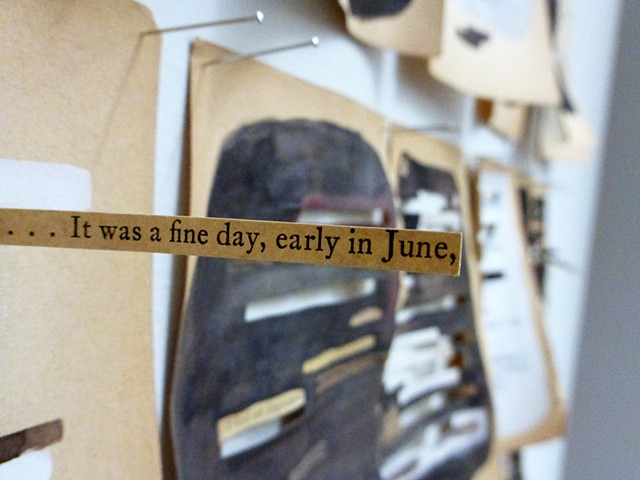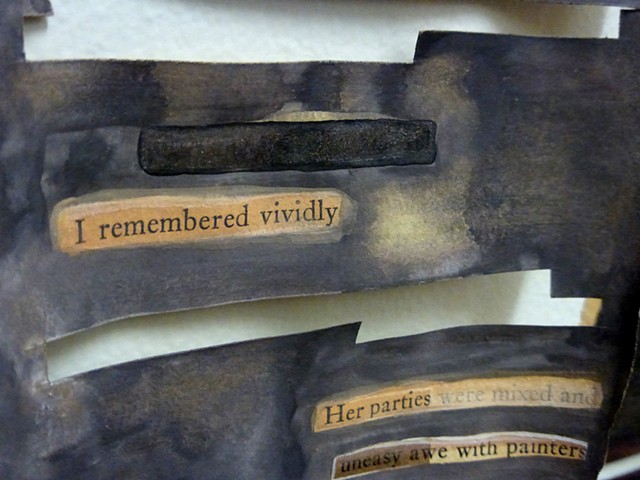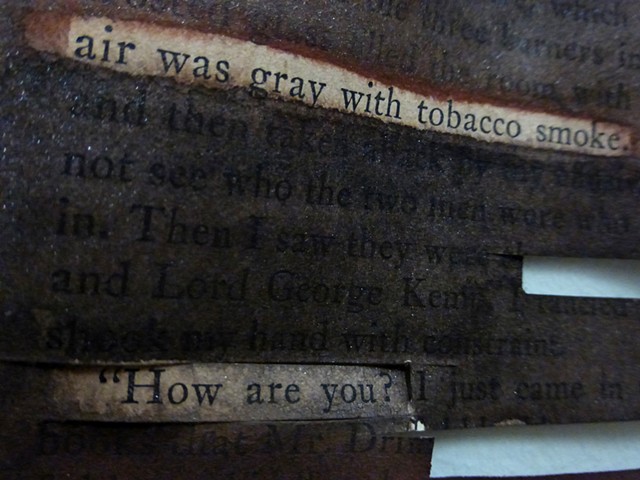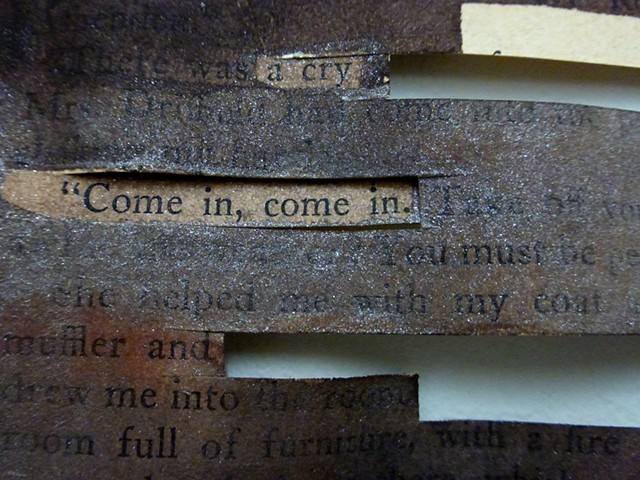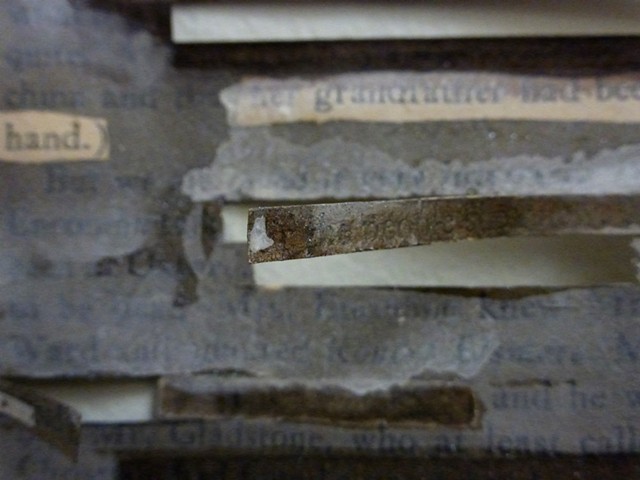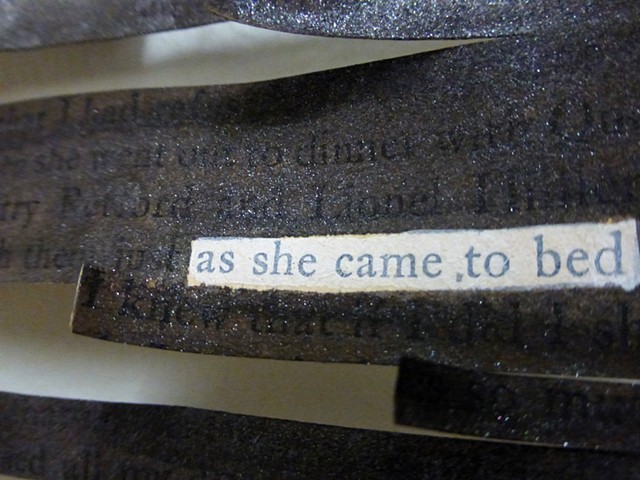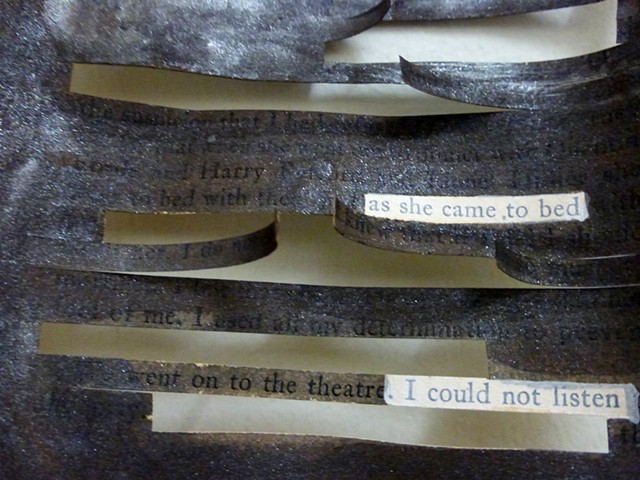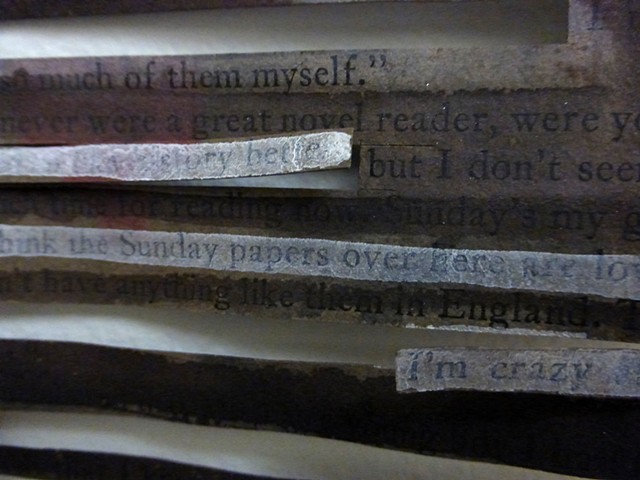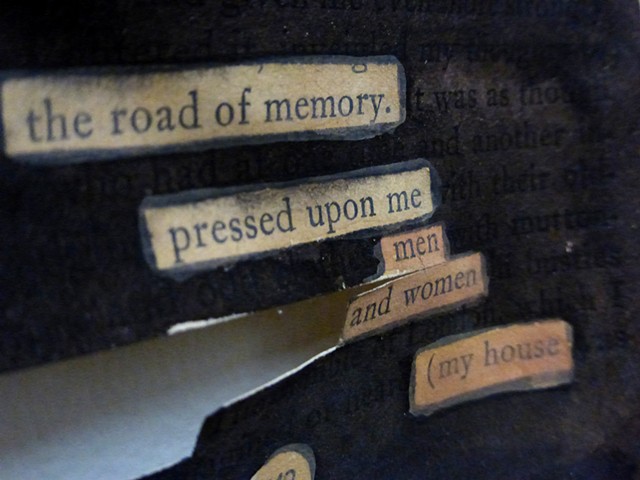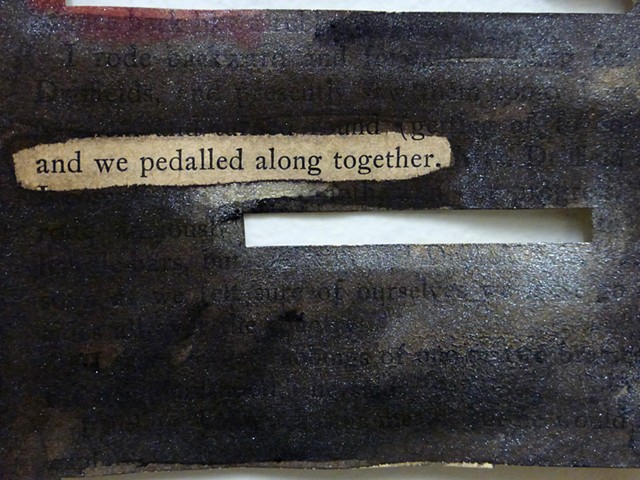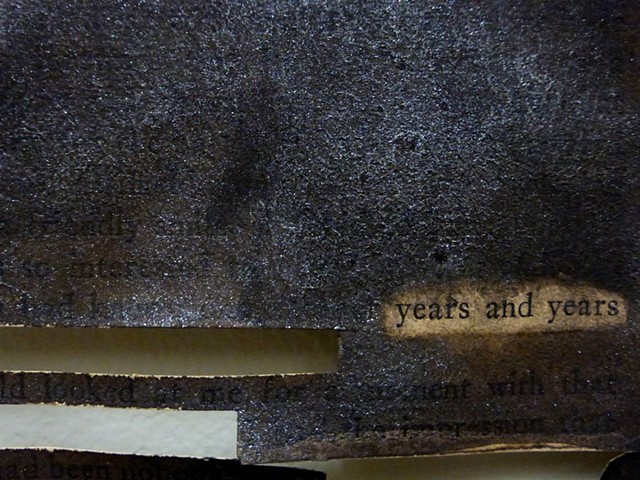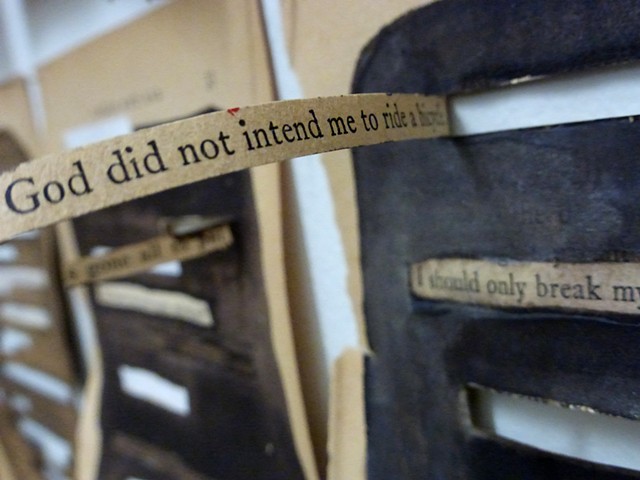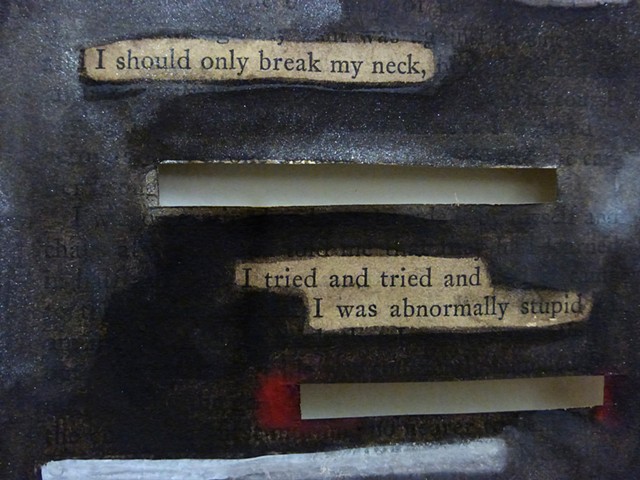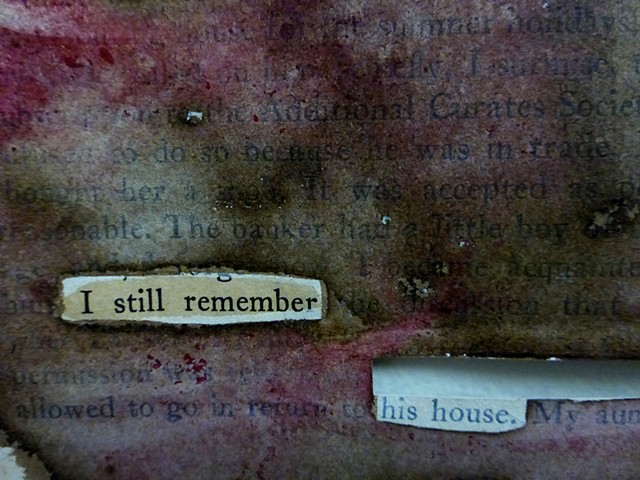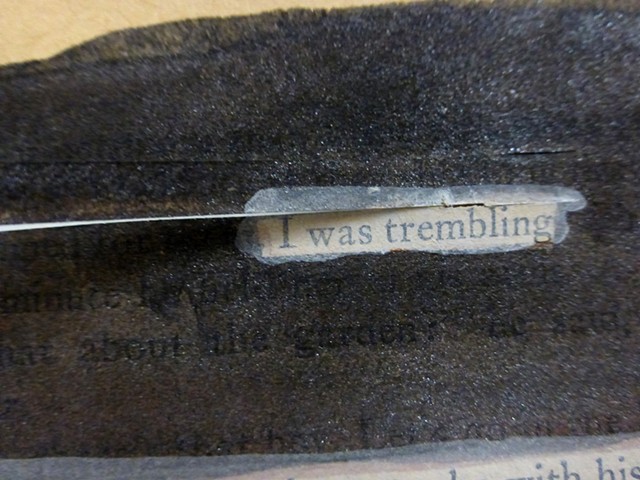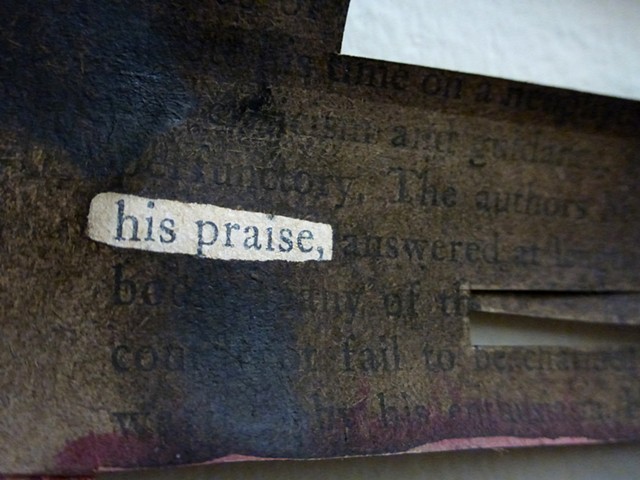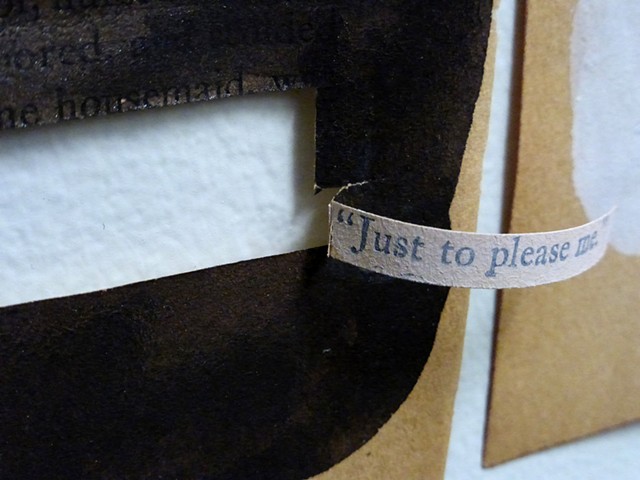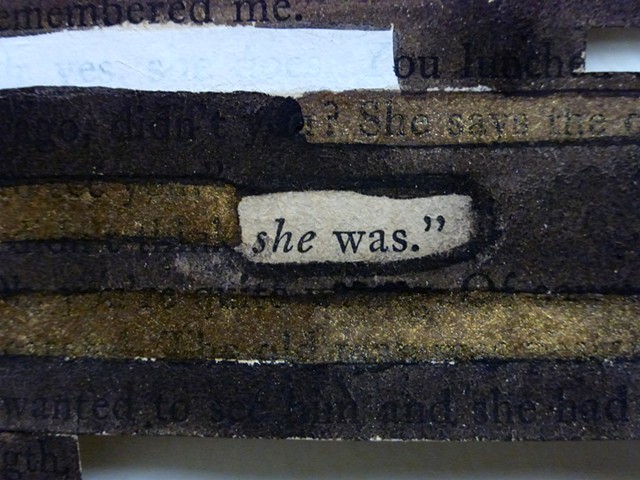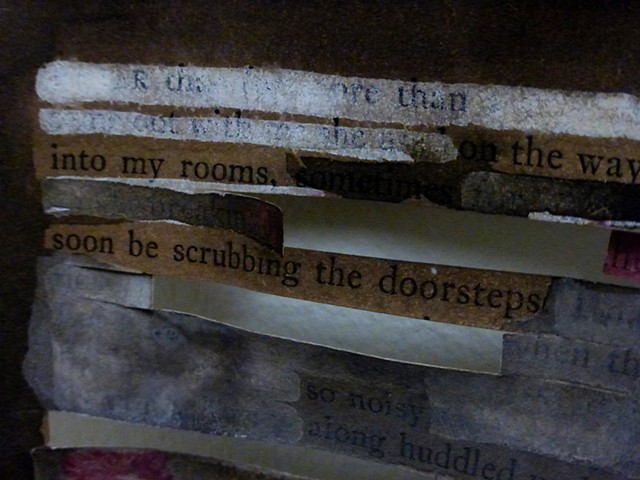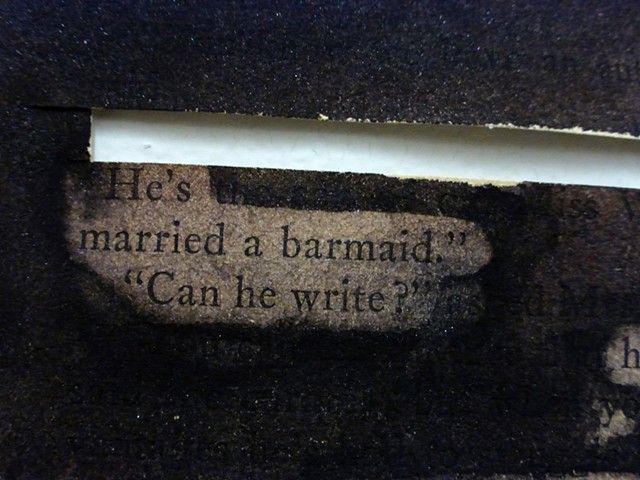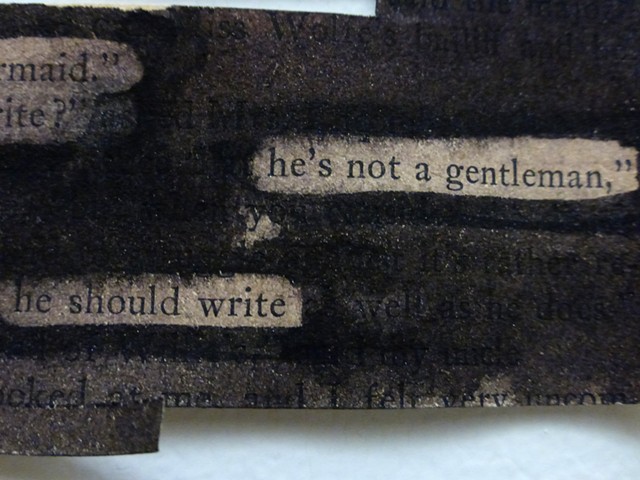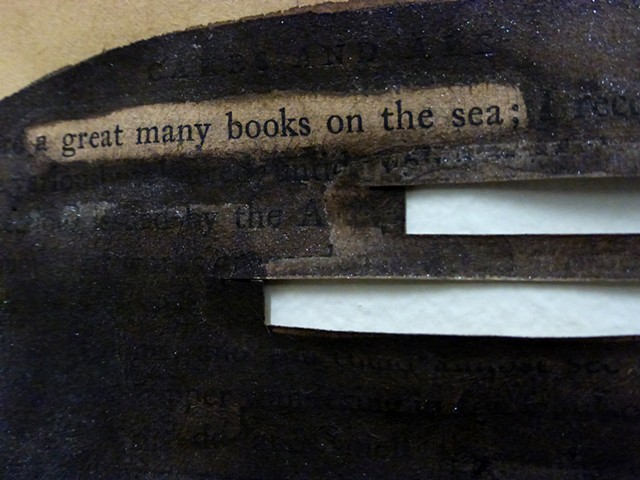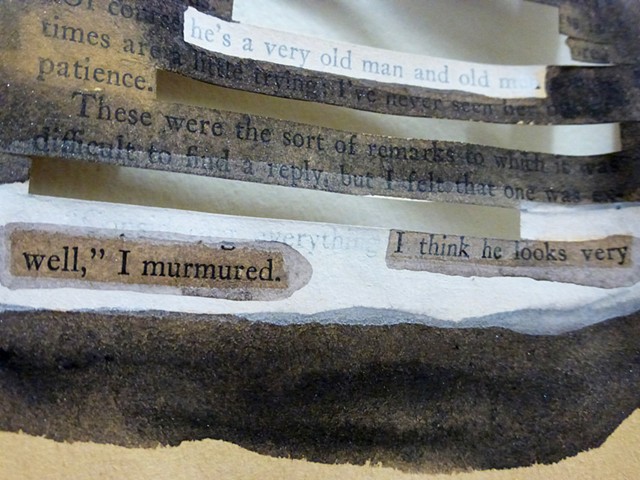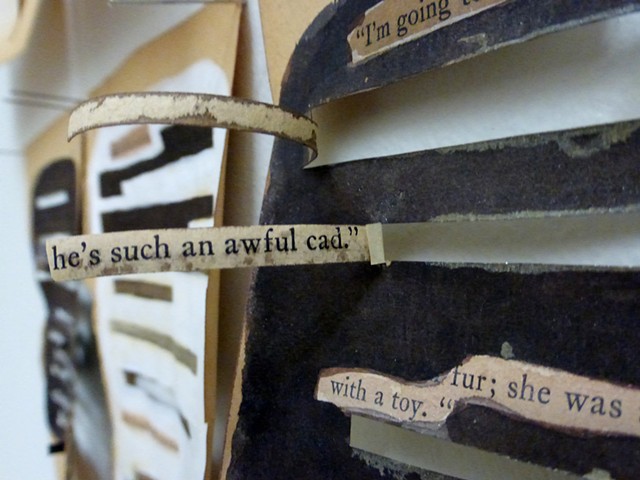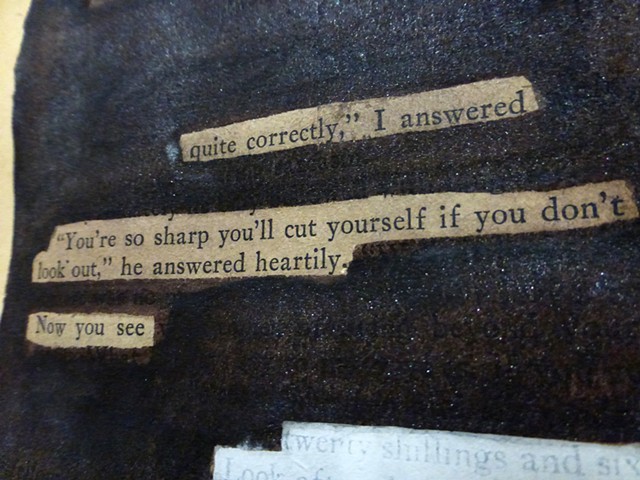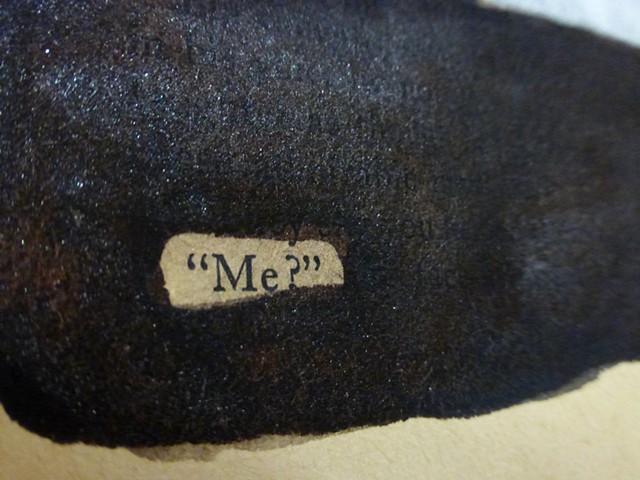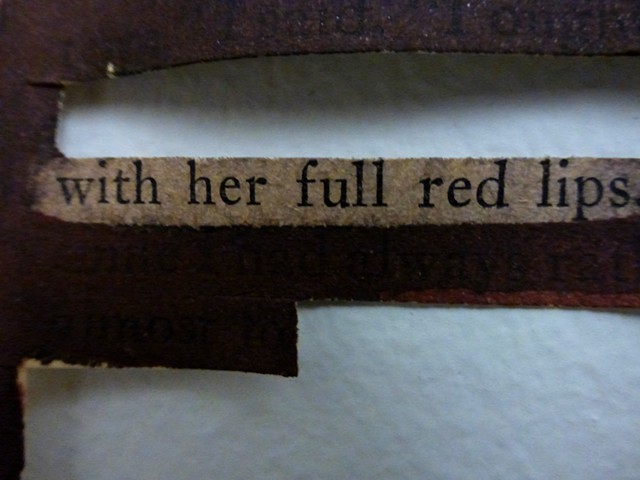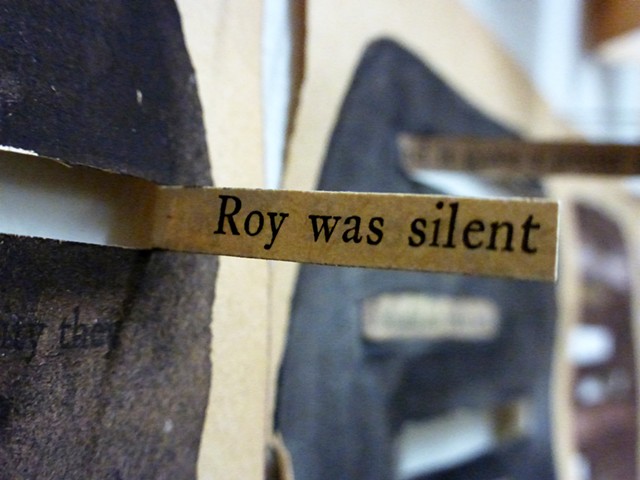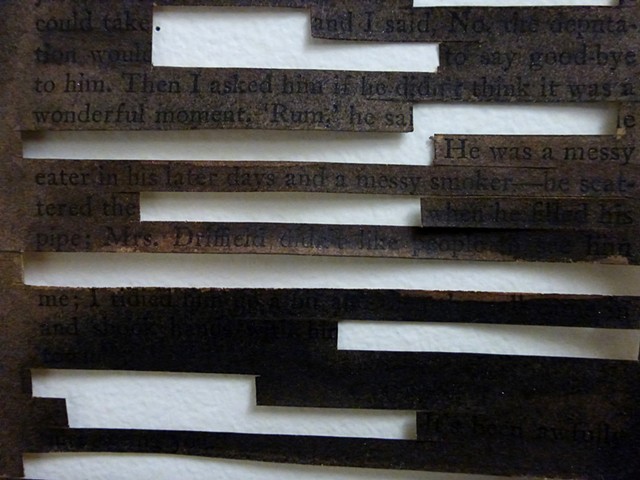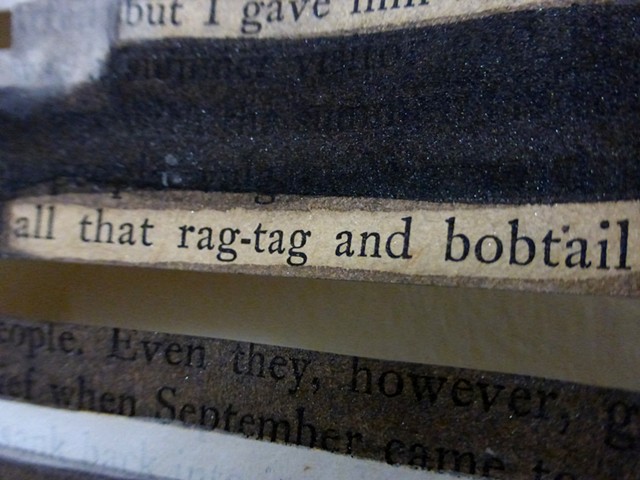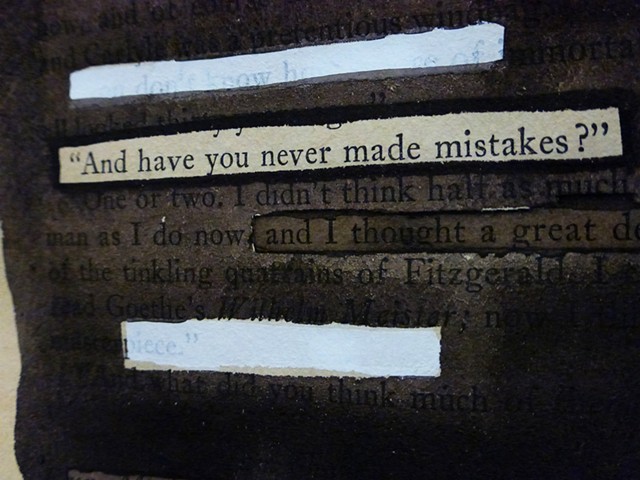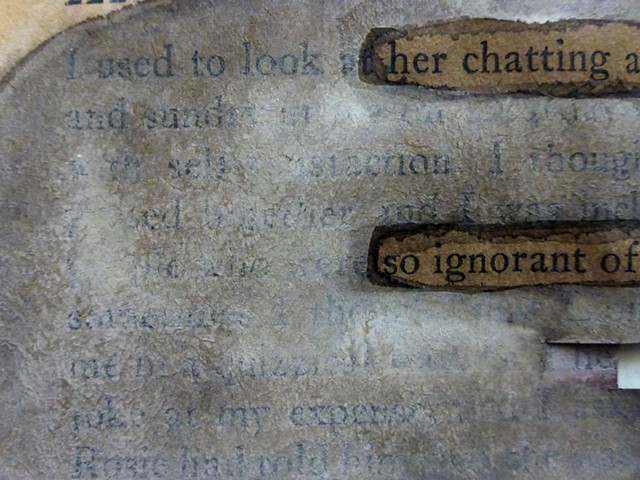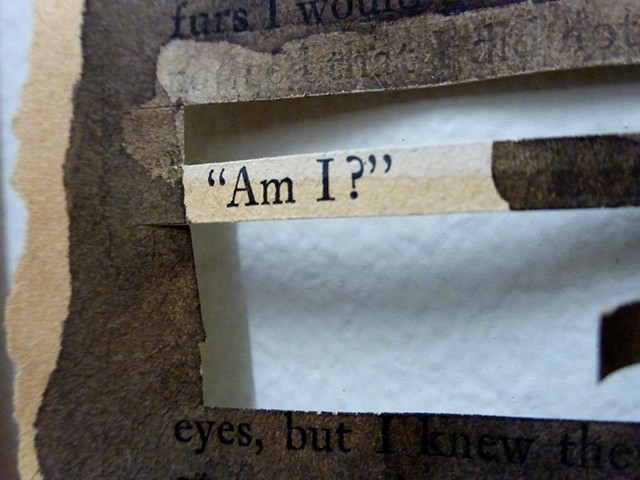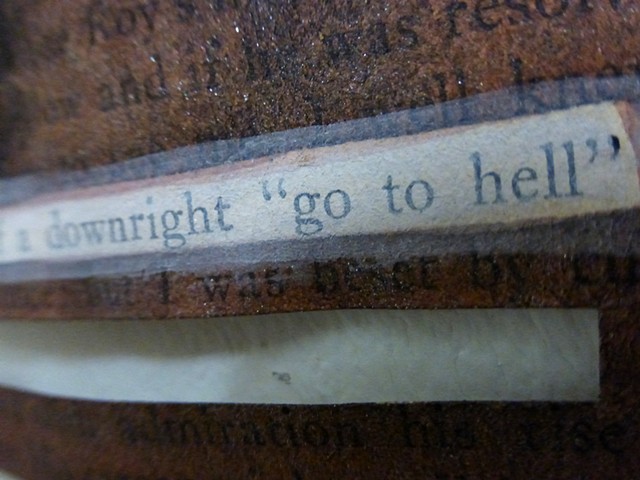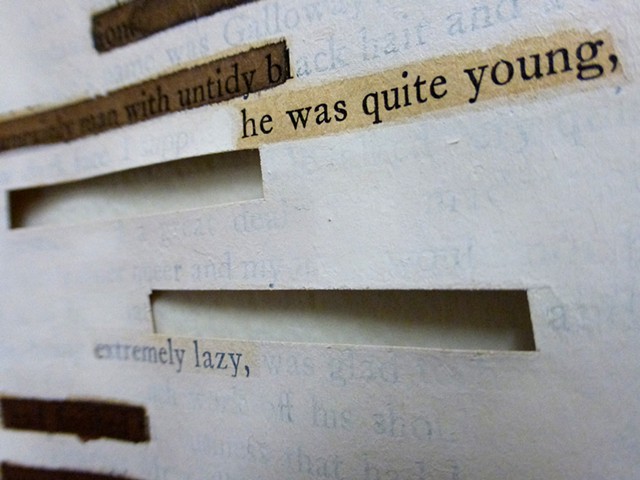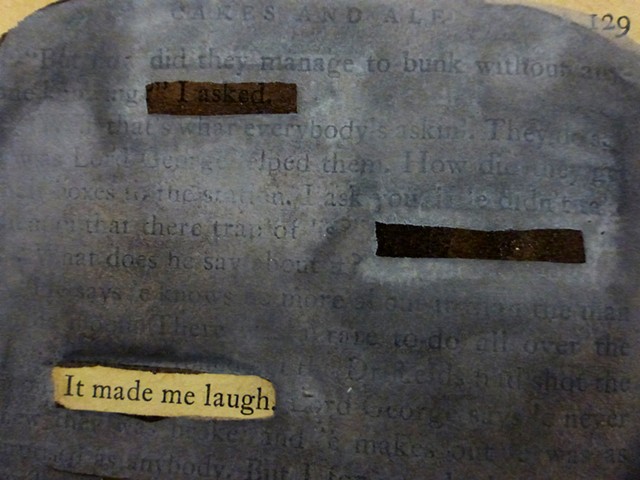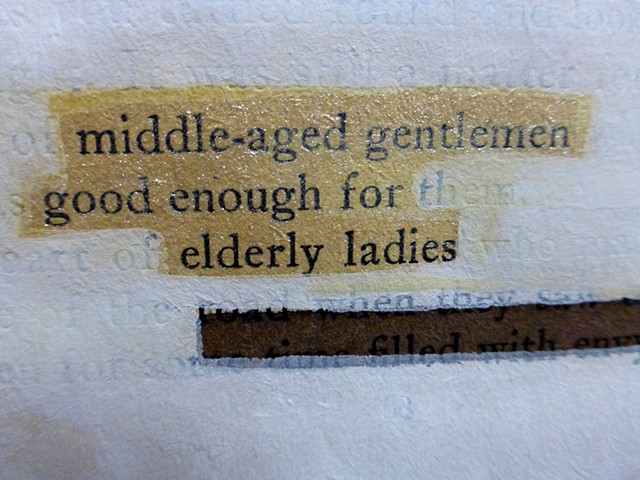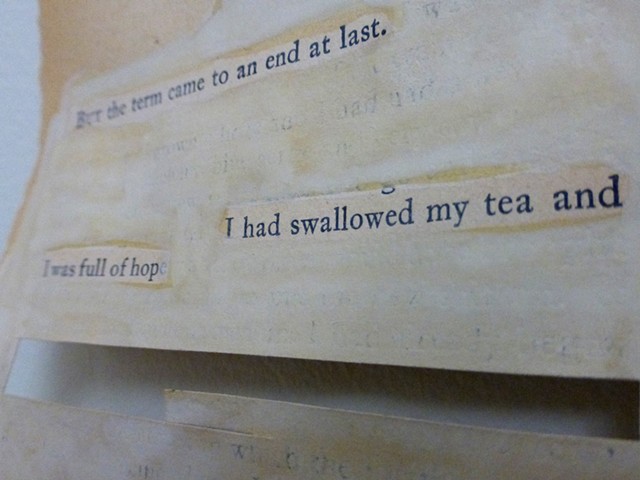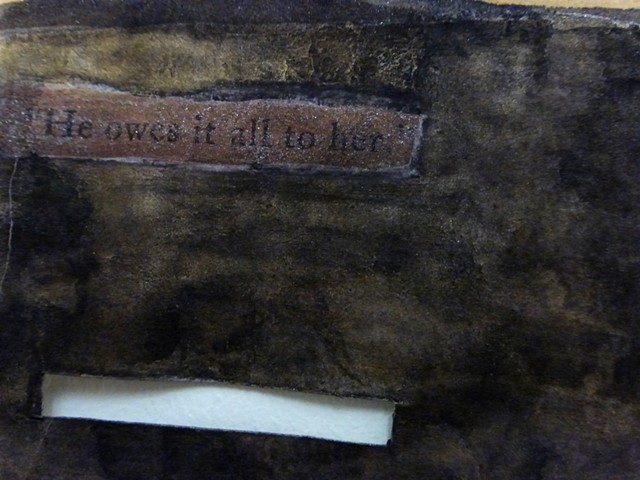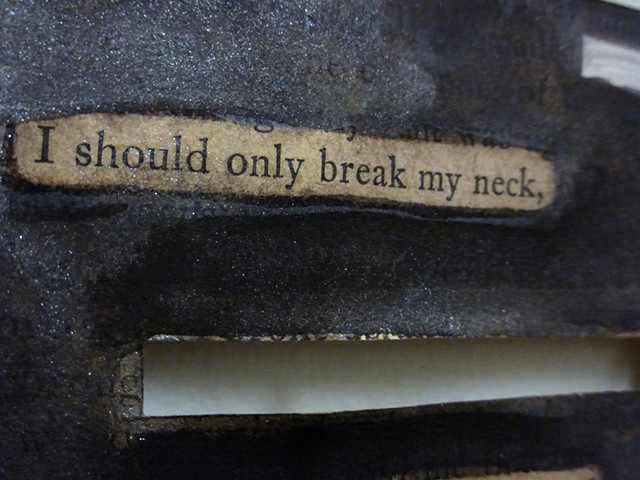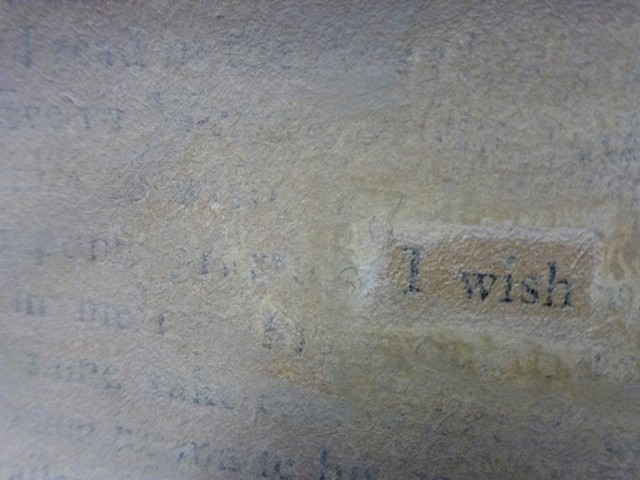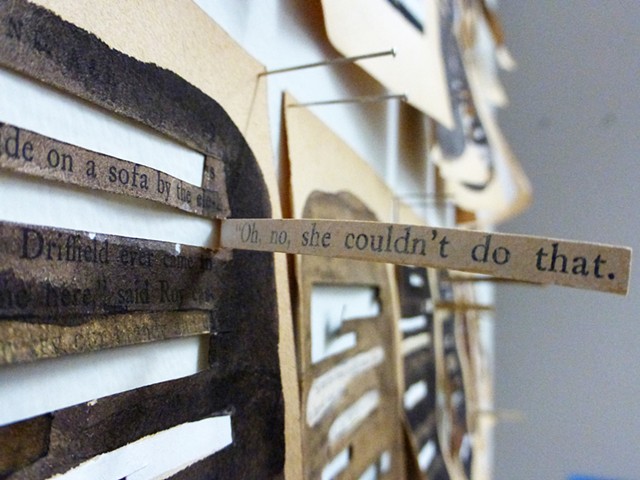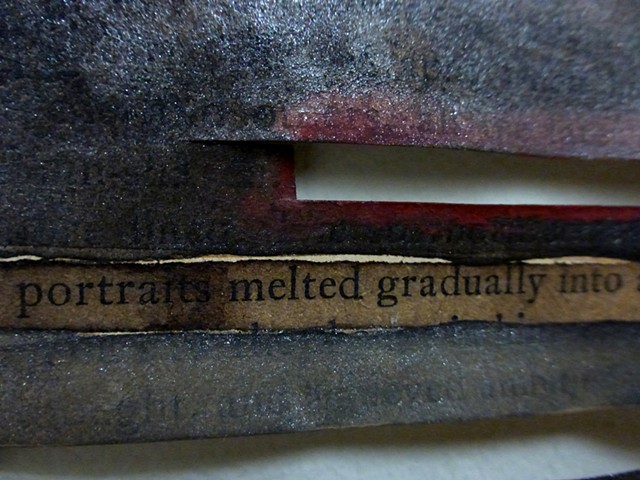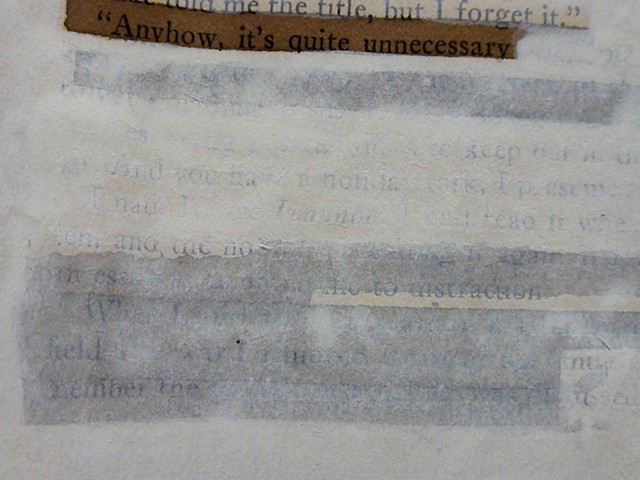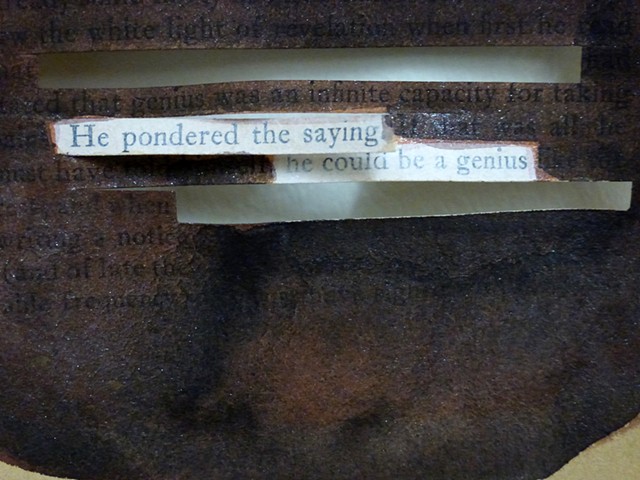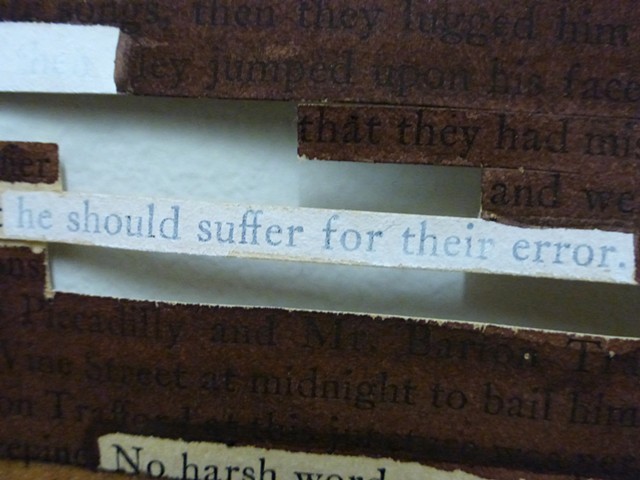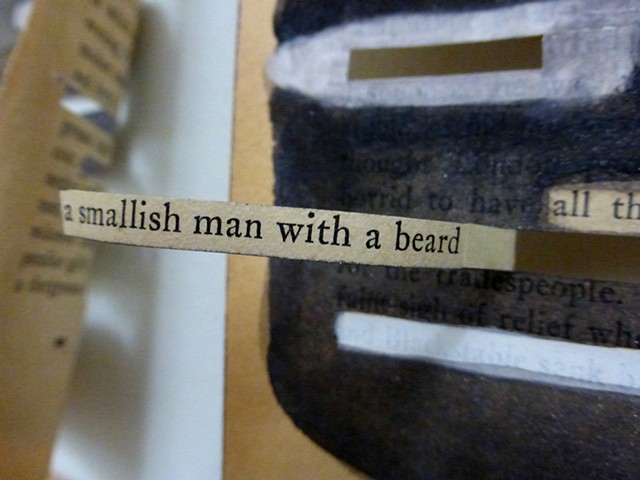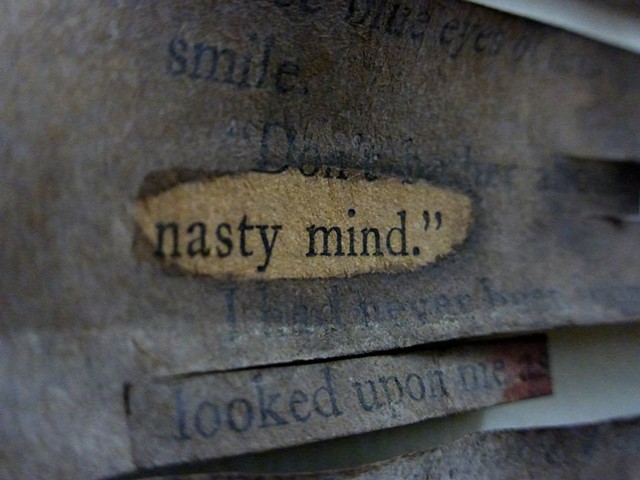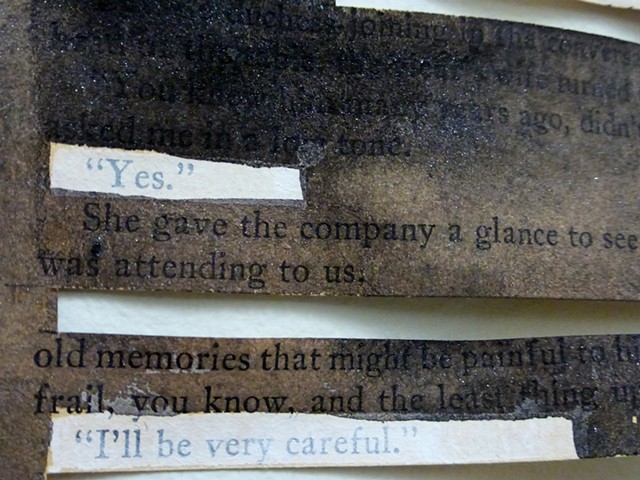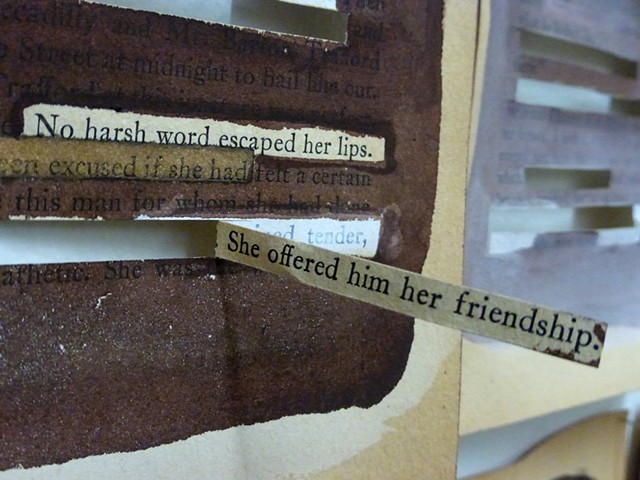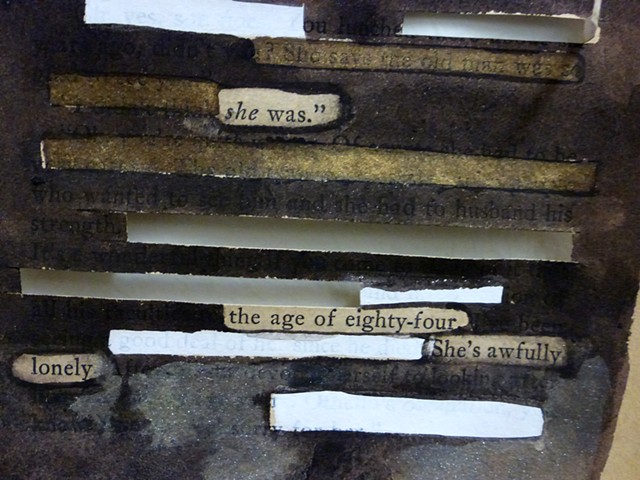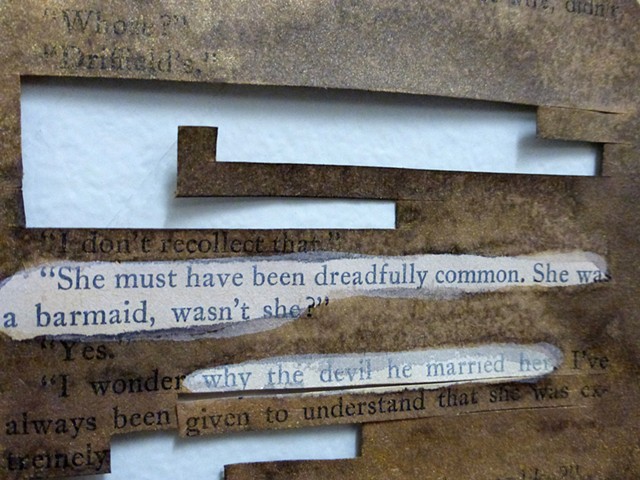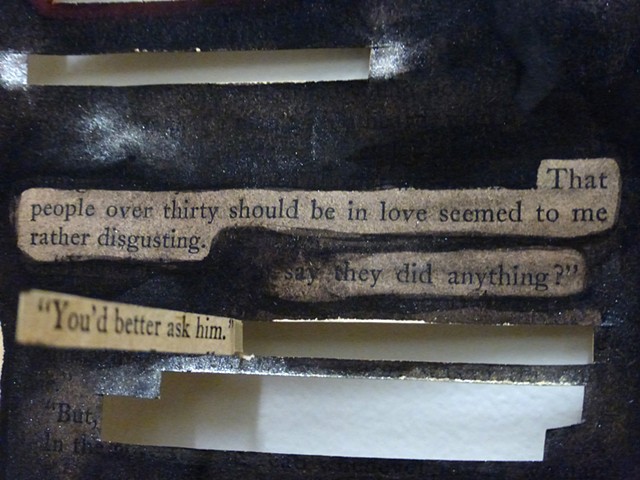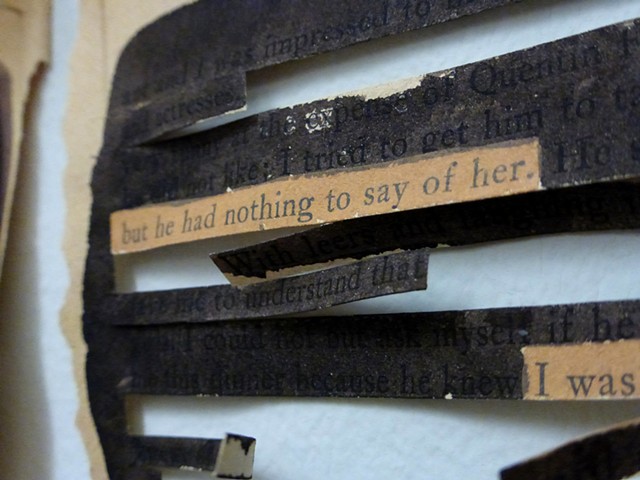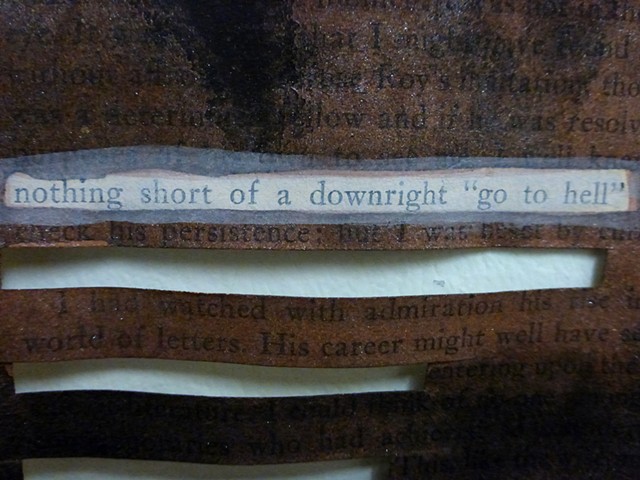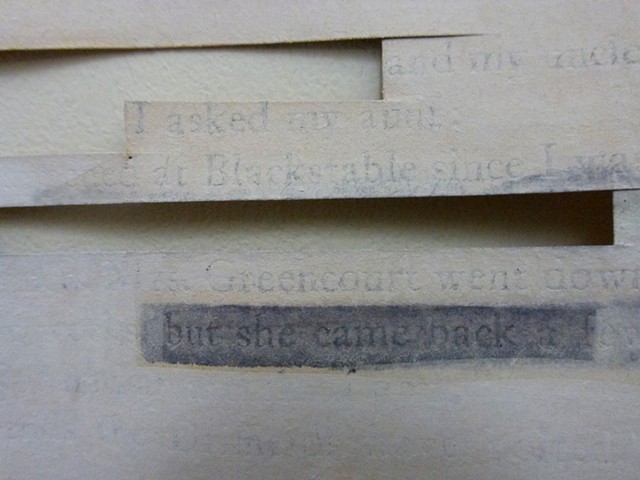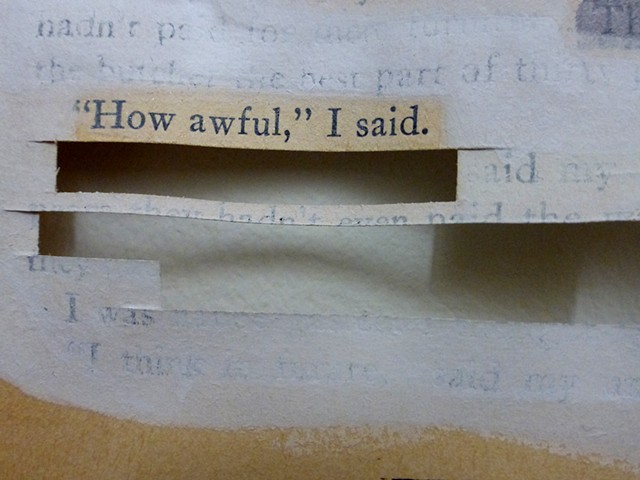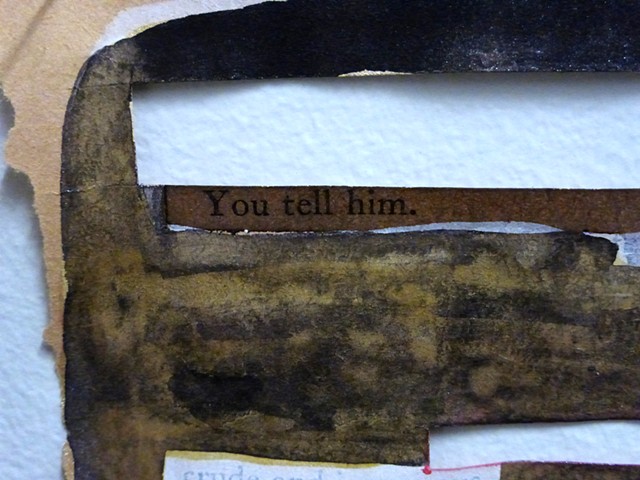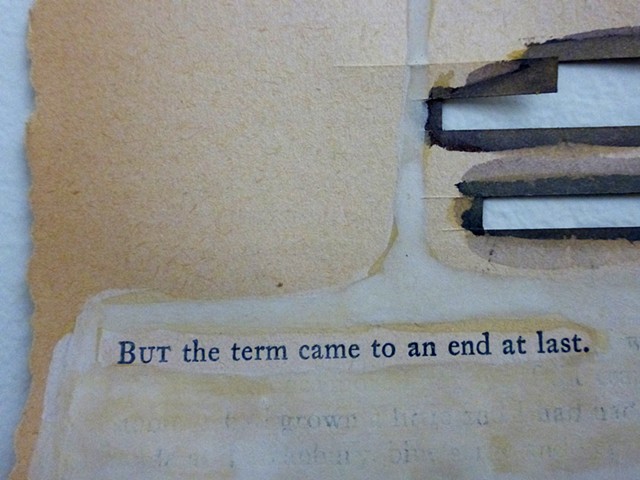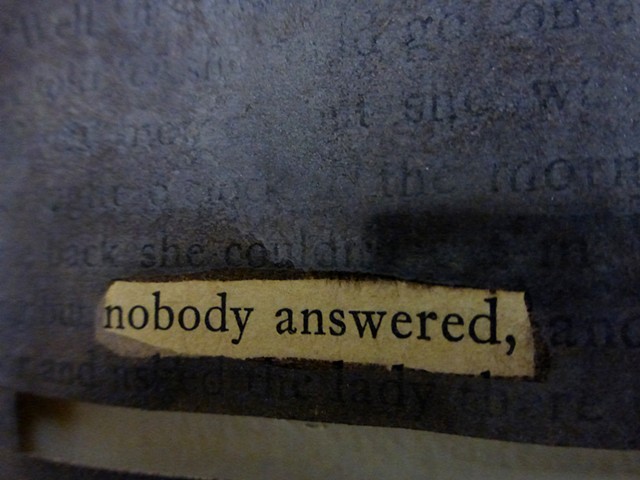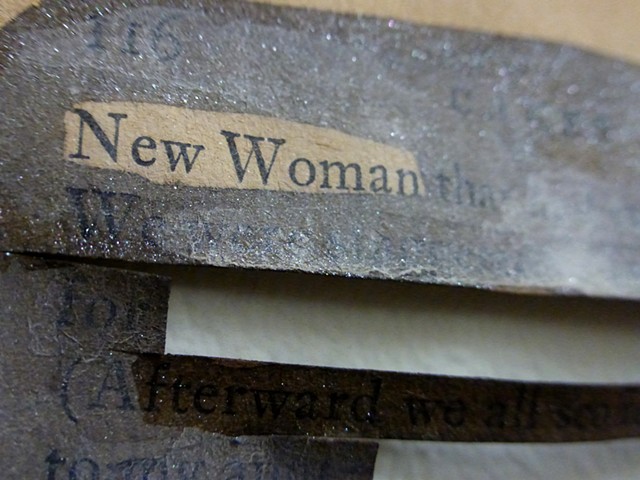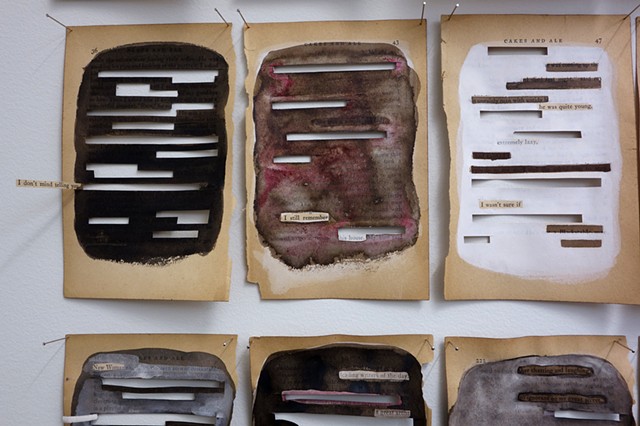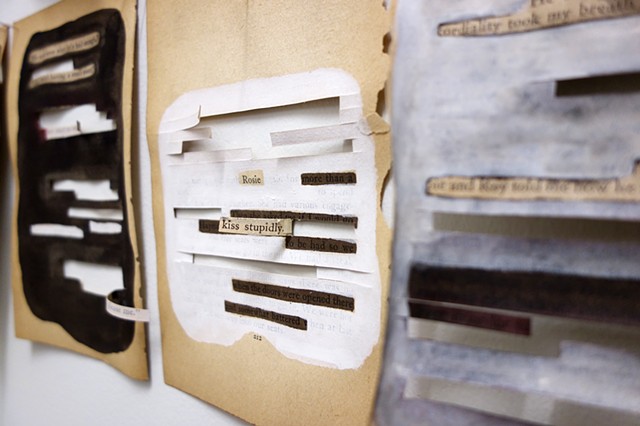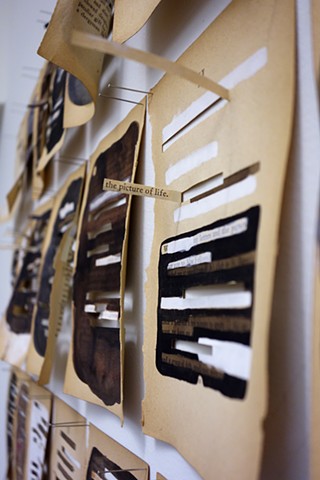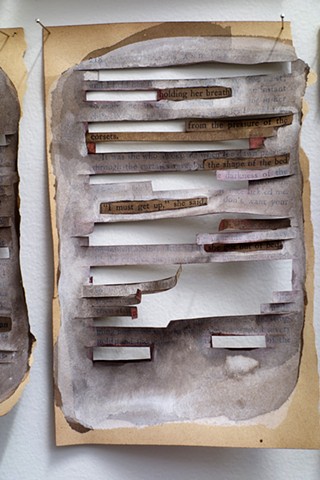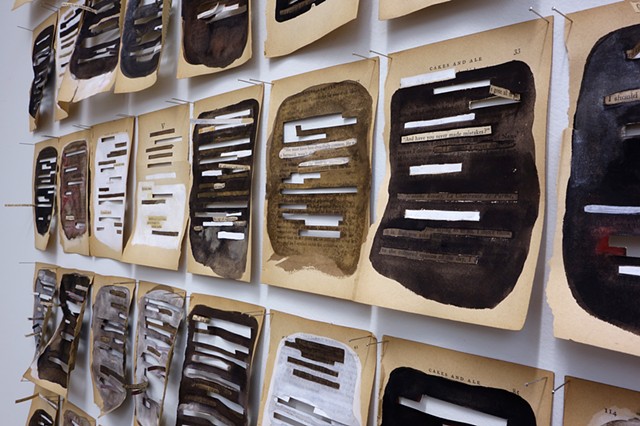Cakes and Ale
Cakes and Ale
2011 – 2018
Altered book pages
Mineral pigment, ink, watercolor and walnut ink on book pages
I used Cakes and Ale, a novel written by the British author W. Somerset Maugham in 1930, for this body of work, and I titled the work as the same.
Cakes and Ale, or, The Skeleton in the Cupboard (1930) is a novel by the British author W. Somerset Maugham. Cakes and Ale was first published in serialised form in four issues of Harper's Bazaar (February, March, April, and June 1930). The first edition of the novel was published in September the same year by William Heinemann in London and the Garden City Publishing Company in Garden City, New York.
Plot Summary:
The story is told by a first-person narrator and well-to-do author, William Ashenden, who, at the beginning of the novel is suddenly and unexpectedly contacted by Alroy Kear, a busybody literary figure in London who has been asked by Amy, the second Mrs Driffield, to write the biography of her deceased husband, Edward Driffield. Driffield, once scorned for his realist representation of late-Victorian working-class characters, had in his later years come to be lionised by scholars of English letters. The second Mrs Driffield, a nurse to the ailing Edward after his first wife left him, is known for her propriety, and her interest in augmenting and cementing her husband's literary reputation. Her only identity is that of caretaker of her husband in life and of his reputation in death. It is well-known, however, that Driffield wrote his best novels while he was married to his first wife and muse, Rosie.
Kear, who is trying to prove his own literary worth, jumps at the opportunity to ride the coat-tails of the great Edward Driffield by writing the biography. Kear, knowing that William Ashenden had a long acquaintanceship with the Driffields as a young man, contacts Ashenden to get privy information about Edward's past, including information about his first wife, who has been oddly erased from the official narrative of Edward's genius.
The story relates Ashenden's recollections of his past associations with the Driffields, especially Rosie. Due to his intimate association with her he hesitates to reveal how much information he will divulge to Driffield's second wife and Kear, who ostensibly wants a "complete" picture of the famous author, but who routinely glosses over the untoward stories that might upset Driffield's surviving wife. Ashenden holds the key to the deep mystery of love, and the act of love, in the life of each character, as he recounts a history of creativity, infidelity and literary memory.
(Retrieved from Wikipedia: May 11, 2018)
